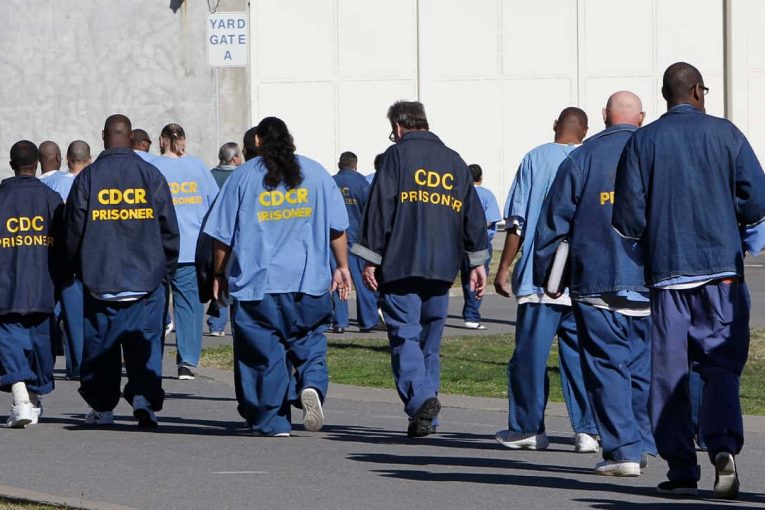
By Julietta Bisharyan, Nick Gardner and Jaskiran Soomal
Davis Vanguard’s weekly update from CDCR’s COVID-19 crisis
Incarcerated Narratives
The following previews a Filter Magazine story by Kevin Sawyer. For the full account, visit https://filtermag.org/prisoner-covid-overcrowding-california/
In October, San Quentin resident Ivan Von Staich’s habeas corpus petition produced a court order mandating that CDCR reduce the population of San Quentin by 50 percent to roughly 1,775 individuals. An ensuing CDCR appeal echoed the department’s staunch dismissal of any wrongdoing in response to the COVID-19 pandemic— “there’s no need to act hastily,” counsel Kathleen Wilson asserted. Wilson’s statement, which was promptly renounced by presiding Judge J. Anthony Kline, came just months before a deadly second wave swept through California’s state prisons, claiming over 160 lives.
In an interview with San Quentin News Associate Editor Kevin Sawyer, Von Staich touched on an unfortunate reality for prison litigants: retaliation.
Von Staich described early instances of retaliation back in August after serving a 35-day stint in solitary confinement, a claim that the CDCR contests. Since then, verbal threats have been constant— on one occasion, Von Staich was told that he needed to “live to get paid” by a guard who believed the incarcerate to be acting out of financial interest.
Von Staich’s legal victory will have tangible implications for some guards at San Quentin. A 50 percent decrease in population will upset the current staff-to-prisoner ratio, requiring the relocation of correctional officers away from San Quentin’s coveted Bay Area setting to facilities with less desirable living conditions. But the 64-year-old Von Staich’s activism can also be seen as highly symbolic, challenging guards’ perception of autonomy over those incarcerated— a phenomenon known as the “Green Wall.”
As one guard put bluntly: “We can do what we want to you. You’re destroying our whole prison.”
Pursuant to the court’s order, CDCR will soon reach a decision as to where Von Staich will complete the remainder of his sentence. But with the window for physical retaliation closing, the incarcerate fears of a last-minute display of Green Wall assertion.
“They’re going to make their move on me when I get on the bus,” Von Staich said. “If I end up dead, at least I talked to somebody.
CDCR Confirmed COVID-19 Cases and Outcomes
As of March 12, there have been a total of 49,168 confirmed COVID-19 cases in the CDCR system – 68 of them emerged in the last two weeks. 81 cases are active in custody while 615 have been released while active. A total of 48,257 confirmed cases have been resolved since the start of the pandemic.
There have been 215 deaths across CDCR. Seven incarcerated persons are currently receiving medical care at outside healthcare facilities.
In the past week, three incarcerated persons have died from complications associated with COVID-19 at Calipatria State Prison, Substance Abuse Treatment Facility and Central California Women’s Facility.
CDCR officials have withheld their identities citing medical privacy issues.
As of March 12, 68,386 individuals have received first-round vaccines statewide. 25,899 are staff members and 42,487 are incarcerated people.
In the past two weeks, Correctional Training Facility has tested the most individuals, 58 percent of its population. California Men’s Colony has tested the least, just 6 percent of its population.
There are currently 94,848 incarcerated persons in California’s prisons – a reduction of 27,561 since March 2020, when the prison outbreaks first began.
Effect on Public
With the high number confirmed cases, over seven facilities have crossed a threshold for herd immunity. About 70 percent of the incarcerated population in these facilities have contracted the virus at some point in the pandemic, which minimizes the potential for further spread.
Dana Simas, a spokeswoman for CDCR, shared that the worst of the pandemic is over and the risk of transmission – particularly in rural areas – might be decreasing.
Governor Newsom exercised his right to grant executive clemency for selected incarcerated individuals. As of March 12, he granted clemency for 20 people and temporary medical reprieves for nine people who are deemed medically vulnerable by correctional medical staff.
These temporary medical reprieves allow for individuals to be transferred “to an appropriate alternative placement in the community to continue serving his/her sentence”. It should be noted that these medical reprieves do not minimize or forgive the individual for their past conduct and harm caused to the public/victims.
The pandemic has also impacted staff employment at CDCR. Prison facilities have accounted for approximately 70 Cal/OSHA reports related to the virus. Half of staff who tested positive were determined to have contracted the virus while on the job.
The employment numbers in CDCR has declined by 1,937 since March 2020. An employee who works at High Desert State Prison reported that many have ended their careers due to the poor working conditions that have put their lives at risk.
The working conditions in CDCR have also had severe mental health impacts on staff. One staff member who quit during the pandemic said, “I think it saved me a lot of grief. And I don’t know. I don’t know what could’ve happened.”
CDCR Staff
There have been at least 15,924 cases of COVID-19 reported among prison staff. 26 staff members have died while 15,389 have returned to work. 535 are still active.
CDCR Comparisons – California and the US
According to the Marshall Project, California prisons rank second in the country for the highest number of confirmed cases, following Federal prisons closely behind. Texas ranks third.
California makes up 12.7 percent of total cases among incarcerated people and 8.5 percent of the total deaths in prison.
California also makes up 15 percent of total cases and 13 percent of total deaths among prison staff.
Division of Juvenile Justice
As of Mar. 12, there are no active cases of COVID-19 among youth at the Division of Juvenile Justice (DJJ) facilities. 204 cases have been resolved since the first case was diagnosed in June.
References:
Population COVID-19 Tracking – COVID-19 Information (ca.gov)
https://www.gov.ca.gov/wp-content/uploads/2021/03/3.12.21-Clemency.pdf